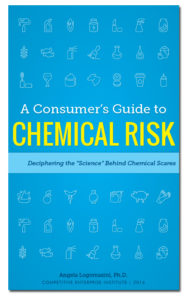Green activists use many different terms to market a anti-chemical agenda, each which sounds reasonable, but actually advocates controls and regulations that may pose even greater risks than the chemicals green target. Today, the term “green chemistry” is often used to suggest that regulators and other know better than companies when it comes to designing “environmentally responsible products.”
Other articulations of this concept include advocacy of “safer substitutes” or the replacement of existing chemicals with so-called “inherently safer chemicals.” But by definition, government-driven product substitution means that consumers lose access to safe and effective products we would otherwise choose because they both enrich our lives and make them safer. And these second-best substitutes might not only fail to meet our needs, but could actually reduce safety.
For example, if activists succeed in removing many flame retardant(1) products from the market, more people might die in fires. If we eliminate disinfectants such as triclosan,(2) more people may get sick. If we take the preservative formaldehyde out of cosmetics, more consumers might suffer health effects from applying rancid products on their skin.(3) And if retailers refuse to sell containers lined with bisphenol A-based resins, inferior replacement products may lead to more incidences of food-borne illnesses.(4)
Browse the terms on the sidebar of this webpage for more details and/or download a copy of A Consumer’s Guide to Chemical Risk: Deciphering the “Science” Behind Chemical Scares.
(1) Angela Logomasini, “Flame Retardant Risks Overblown,” OpenMarket.org, July 18, 2012.
(2) Angela Logomasini, ““Shocking’ Truth about Government and Soap,” OpenMarket.org, May 13, 2013.
(3) Angela Logomasini, “Of Mice, Mushrooms, And Formaldehyde,” OpenMarket.org, October 18, 2012.
(4) Angela Logomasini, “BPA resin replacements may be more harmful, The Hill Congress Blog,” December 27, 2012,
.


